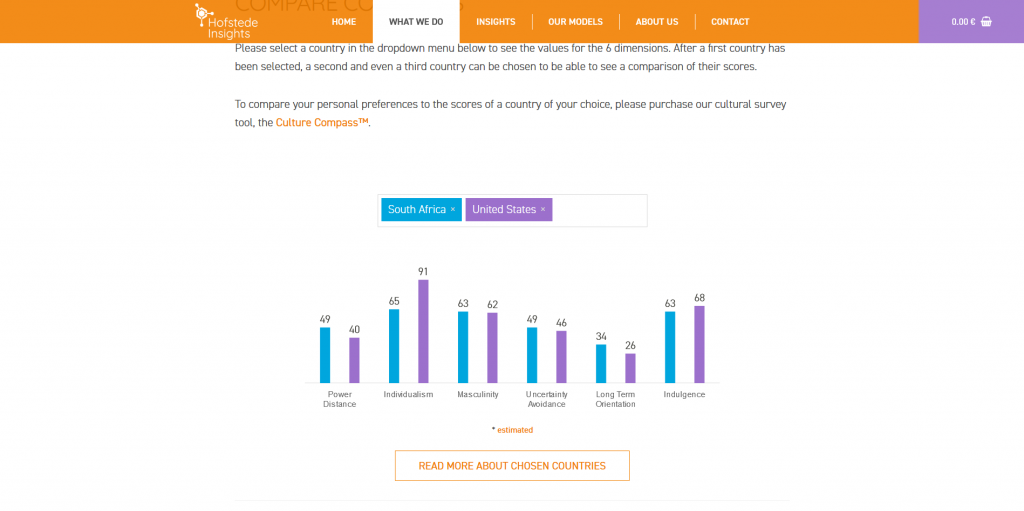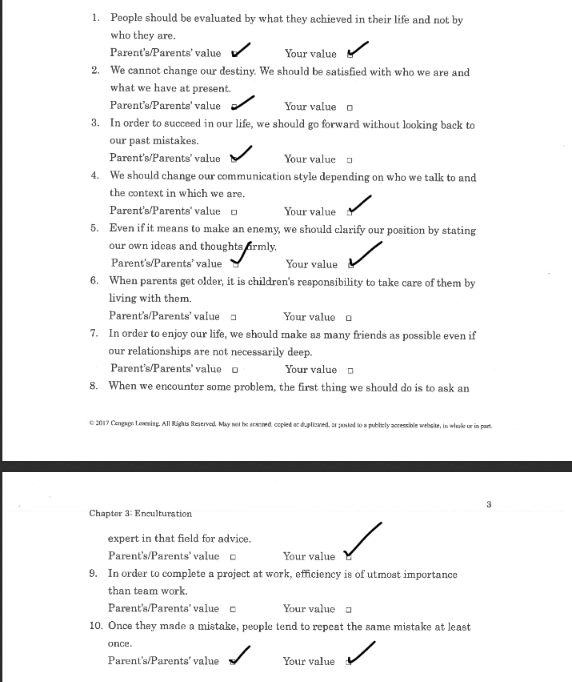TA5

I decided to take this picture because, to me, it represents my culture as a whole. You may think “how” in frustration; but on my way home, I saw the highway in front of me and thought it represents my culture from a national perspective. There’s the highway to the left. Trees, forests, and foliage surrounding the road and in the distance. And to the right of the road, you see it. Over and over and over. Billboard after billboard. I thought how “this would be kind of nice if materialism and consumption wasn’t blocking my view.” We have cars, technological innovation in electrical wiring, and all those billboards trying to sell us something through the trees. Even worse is the closest billboard…a billboard that is trying to sell a billboard. And that’s when I knew driving home one day that I wanted to capture this scene.
I learned from this activity that I had quite a cynical view of American nationalism, consumption, and materialism just as I was beginning to learn about culture in psychology.
I chose this artifact because it was my very first artifact. I wanted to include it as my number five because I wanted my top five artifacts to articulate my thought processes throughout the semester. I think it was a pretty good picture too, considering I drive a stick and got the photo exactly as I wanted with the row of billboards visible and the “advertise here” billboard right in the corner.
TA4

I chose this image because I believe it perfectly encapsulates how “time” is something that is constantly on my mind and how I can always see it running out.
Retrieved from: https://www.pinterest.com/pin/231302130836002137/
How Long Can You Wait?
Hall (1973) suggested that cultures differ in their time perspective and orientation. He analyzed differences among people of different cultures in their use of time and how these differences manifested themselves in actual behavioral practices with such context as business. We interact with various people in our daily lives. However, the point is whether people present different behaviors to different people in terms of time. Suppose you have an appointment to meet each of the following people somewhere outside. If your partner did not show up at the appointed time, how long can you wait or are you willing to wait? Write the minutes you can wait for each person below.
| Target Person | Minutes |
| Your parent | 25 |
| Your older sibling | N/A |
| Your boyfriend or girlfriend | 5 |
| Your best friend | 25 |
| Your colleague | 10 |
| Your client | 5 |
| Your boss | 5 |
Did you find any differences in the results?
Yes
If you said “yes” in the previous question, who will you wait for the longest time and who will you wait for the shortest time? Why?
When I answered these quickly, it made me realize that I would wait for my parents and my best friend the longest, both at 25 minutes, while I would wait for a boyfriend, a client, and a boss at the same shortest times of 5 minutes.
I believe that I would give my parents and my best friend more time because I understand their perspectives of “time.” My parents are generally bad with time, my Mom is much worse than my Dad, but I know they don’t ever really “mean it” if they’re late to something. My best friend, as an Air Force woman, is almost never late to anything. If she’s late to something, there must be a really good reason for it and I would give her that benefit of the doubt.
When it comes to a boyfriend, I would give him the shortest time because I would expect him to know my delicate relationship with time. The fact that I’m always short on it, and always running out of it. I would think that would be something he values as well, so neither one of us would waste each other’s time.
Finally, for a boss and a client at five minutes, I really think I’ve mentally distanced myself from sinking time into work and making work your entire life as a whole. Because of that, I place a lot more value on my time than I do on the money. I think it also may have to do with accepting being an Atheist. When you grow up very religious, and you realize you can no longer believe, your life becomes all you have, and your lifespan is shortened from potential “infinity” to “maybe fifty years if I’m extremely lucky.” Because of that, you literally cannot put a price on the precious time you have left.
I learned from this activity my own relationship with time and how my culture has played a role in my perception of it.
I chose this artifact because this semester, in particular, time is something that’s been on my mind a lot lately and it’s something that has been very contentious for me. I feel like the past year it’s been going by so fast, and yet so slow at the same time. This artifact, back when it was done, made me take a step back and realize how my perspective of time has shifted over time. It was always going to feel like it was going faster, but I feel like time feels now how I thought it would feel when I was around sixty years old. Like I’m so short on it, I can feel it every day. It was good to revisit it by allowing myself to take a breath; to realize that I can slow things back down if I take a step back and allow my perspective to slow.
TA3

I chose this image, a screenshot comparing the United States to South Africa because it’s an excellent visual that visually represents my artifact.
For this particular artifact review Hofstede’s five value dimensions that differentiate cultures (see pages 22-23 of the text). Find your country on the ‘Countries and Scores on Value Dimensions’ PDF (or pages 55-56 of the text).
Look at your country’s scores on the five cultural dimensions. How do those scores compare to scores from other countries? How do those comparisons compare to your experiences with people from other cultures? Compare your country to a country that you would like to visit by following the steps below: How do the two countries compare on each of these dimensions?
My country of origin, the United States, is at:
40 for “Power Distance,” meaning that the U.S. will moderately encourage a power dynamic between less power and more powerful group members.
91 for “Individualism,” meaning the U.S. will substantially encourage that people look after themselves.
62 for “Masculinity,” meaning the U.S. values more materialistic things.
46 for “Uncertainty Avoidance,” meaning the U.S. is moderately afraid of “the unknown.”
26 for “Long-Vs. Short-Term Orientation,” meaning the U.S. does not strongly encourage a delay in gratification.
A country I would like to visit one day, South Africa, is at:
49 for “Power Distance,” meaning that S.A. will moderately encourage (more than the U.S.) a power dynamic between less power and more powerful group members.
65 for “Individualism,” meaning S.A. will encourage people to look after themselves some, but also not to dismiss the collective society as a whole.
63 for “Masculinity,” meaning S.A. values more materialistic things, slightly more than the U.S.
49 for “Uncertainty Avoidance,” meaning S.A. is slightly more afraid of “the unknown” compared to the U.S.
34 for “Long-Vs. Short-Term Orientation,” meaning S.A. slightly encourages a delay in gratification (at least generally more than the U.S.)
I learned from this activity how to better differentiate between Hofstede’s value dimensions, which I was having some difficulties recalling when we first began to learn about the country’s value dimensions.
I chose this artifact because after writing about South Africa in my fifth assignment, it made me want to come back to this artifact and revisit the country from earlier in the semester. I enjoyed the assignment when it was done before, but after doing more thorough research on the various languages in the country and their cultural perspective, I wanted to come back and compare South Africa with the United States as well. It was surprising to revisit this artifact and see how similar S.A. is to the U.S. on so many value dimensions, but also so different. This artifact, as well as assignment five, made me realize that the value dimensions are much more substantial in their measurements that I anticipated. For example, with the U.S. at 91 for individualism and S.A. at 65, they aren’t that far off, but S.A. seemed substantially more collectivist because (as I learned in assignment five) they don’t separate people into groups as much there. It was definitely an excellent artifact to go back to, review, compare, and write about to understand the power dimension scale better.
TA2

Parenting behaviors are one of the factors that may influence how people become enculturated. Also people’s behaviors mirror their own values, which are often related to expectations of the society and culture they live in.
Complete the attached Enculturation Activity. Discuss whether or not you found any discrepancies in your responses between Parental Value and Your Value for each of the 10 statements.
If you did not find discrepancies, what can you draw from your findings? If you did find discrepancies, what were some of the differences? What factors do you think influenced you in terms of your present values (e.g., your experiences, people who you interacted with in the past, etc.)?
I did find discrepancies between “parental values” and “my personal values” within four out of ten items on the enculturation activity. I think the questions where there were no discrepancies were due to enculturation from my parents, and the differences were due to either context or my own personal experiences.
For example, one response checked for parental values, but not checked for me was question two, which referred to “destiny.” Whenever my parents (specifically, my Mom) are going through a difficult time or a stressful event, she will often say, “Oh well, it is what it is.” I cannot stand hearing this. I can understand, to a certain degree, not trying to stress about things one cannot change. But when she says this, the vast majority of the time, it’s something she has complete control over. Even when it’s not total control, it’s certainly something that can be influenced by an action of some sort. I don’t generally have this mindset. If there’s an issue, I’m immediately looking for solutions and what I can do about it, how much I can do, etc.
I think when it comes to this question, religion is the largest factor to influence my present values. Because I grew up in a religious, Baptist household and my parents are Baptists, it makes sense that they occasionally “leave it up to God,” or “leave it to prayer”; in other words, “it is what it is.”
I, on the other hand, am an Atheist. Because I don’t believe praying will solve my problems or issues, it always requires some sort of action. Even if something is not completely in control, I still think doing something would at least influence it (whatever that may be).
Finally, there’s context. It may initially seem contradictory that “my values” would include both changing my communication style depending on the person and the context, while also including a value of stating ideas/thoughts resolutely, with conviction, regardless of the possibility to make enemies. Overall, I’ll generally express my thoughts quite decisively in the company of those closest to me, but with strangers, I take more of the context into consideration. This is because I don’t think there’s any reason to start a verbal argument with people I don’t really know all that well.
During this activity, I really got to weigh the influence my parents had over my enculturation process and how they influenced that process within me. Considering they matched the majority of the items (i.e., six out of ten), it’s clear they had an influence on me.
I chose this artifact because it really got my mind thinking back then on the values my parents instilled within me. It got me to recognize the parts of us that feel very different, but further, it got me to acknowledge the parts of us that are very similar. It’s very clear from questions six and seven that both my parents and I are very individualistic; it is a trait that was very much valued during my enculturation process, and it’s been a staple of my personality ever since.
TA1

I chose this photo because it’s representative of my predominant posture, which is bad! This is a level of “drawn in” that I do think is really harmful (and painful), but I’m honest about trying to correct this level of closed posture.
Retrieved from: https://www.spine-health.com/conditions/upper-back-pain/causes-upper-back-pain
Watch Amy Cuddy’s Ted Talk “Your Body Language May Shape Who You Are.”
Video link: https://www.youtube.com/watch?v=Ks-_Mh1QhMc
Discuss your takeaway from this video. How do some of the points in the video align with what you read in the Culture, Language, and Communication chapter?
My takeaway from the video is a broad mix of emotions. First and foremost, I jokingly chuckled at the first few lines of Amy Cuddy’s speech, thinking, “this must be where Jordan Peterson got his schtick!” And right after with the handshake clip, “this must be why we all collectively feel so uncomfortable with Donald Trump’s awkward-looking body language and when he shakes hands with other leaders so strangely!”
Okay, so joking and social commentary aside, I think Cuddy’s observation of body language during elevated emotion are accurate. For example, I got into a verbal “confrontation” with a customer at work the other day and, because I had read chapter ten at that point, I became acutely aware when the other person was leaving that my posture had changed entirely without my cognitive awareness as it actually occurred. My chest had extended outward, my chin was elevated, arms were extended out with my fists at my sides, and even my legs were further apart than they usually are. At 5’5”, 140lbs, my body felt more substantial than the 6’0” 200lbs man. His head drew downward and shoulders slumped as he pulled into himself because he was not expecting any sort of opposition before he slunk out with nothing further to add.
Now, that was in an elevated emotional state. Because of this interaction (and the chapter in general), I think Cuddy was accurate in this regard. However, I have mixed feelings about other conclusions.
By the end of the video, Cuddy makes a case for a mindset of “fake it till you become it.” This is after discussing how the women within this MBA class are just as motivated, knowledgeable, and capable as the men. Instead of asking why the course is set up to value qualities that (she says herself) are more inherent in men, the solution is to take the (possibly) beneficial attributes of women and remove them. I’m not an expert on MBAs and what a degree in business entails, but I would think a more “cautious” or conservative approach would be beneficial sometimes. It feels as if there should be more expansive questions asked of why that culture places such substantial value on that quality and if it’s a generally positive thing.
However, it could just be because my predominant body language is more “drawn in,” and I’m feeling somewhat cynical about it. I do think it’s a legitimate question to ask, though.
The main point in the video that aligned with the “Culture, Language, and Communication” chapter of the text was the overall discussion of “nonverbal behaviors,” or all of our ways of communicating that don’t actually involve verbal communication. The nonverbal behavior focused most heavily on was “posture.”
During this activity, I learned more about nonverbal communication, body language, posture, and how we cognitively process all of these visual stimuli as communication.
I chose this artifact because it was one of the only “artifacts to archive” done that included a video; I’m a somewhat visual learner, so it really helps when I can do an activity that incorporates video within the lesson and because of that, it was highly memorable. In addition to the video component, it was also an artifact done where I didn’t wholly agree with the message. I questioned why Cuddy didn’t think beyond trying to “fix” the attributes she found were more inherent in women; instead, asking why the culture in that setting was the way it was. Why the “cultural value” was weighted in men’s favor, whether or not that was “right” or “valuable” in that cultural setting, or if diversifying would be valuable within “business culture” as a whole. I still think these are good questions to ask considering, since the artifact, I learned that after the Great Recession in 2008, Iceland’s economy was saved by one financial institution run by women (see https://www.theguardian.com/world/2009/feb/22/iceland-women; https://www.pri.org/stories/2012-06-30/women-rescue-iceland). Attributes such as “caution” and “non-callous-risk-taking” were speculated to have saved Iceland’s economy (or at least diverted a more severe recession). Therefore, there are more questions raised to the value Cuddy places on the attributes she does.